How To Cover Up Old Pebbledash
Pebbledash, a once-prevalent feature in British home architecture, is a unique and rugged exterior finish. Its creation involves applying a wet mortar mix to walls and then pressing small pebbles or gravel into the surface. This technique provides a robust, weather-resistant layer and adds a distinctive texture and character to the buildings. However, the charm of pebbledash can fade over time, leading to a dated appearance that many homeowners wish to refresh or completely overhaul. The texture of pebbledash, with its rough and uneven surface, presents specific challenges and opportunities for renovation. The techniques to cover up old pebbledash vary.
In this blog, we will guide you through the nuances of pebbledash — its composition, its initial appeal, and the reasons it may now feel outdated. We will then delve into detailed methods for covering or replacing pebbledash, ensuring your home’s façade reflects contemporary styles while preserving its structural integrity. From choosing the right materials to understanding the application and maintenance process, we aim to equip you with all the knowledge you need for a successful exterior makeover.
How do I get rid of pebbledash?
Pebbledash became extremely popular in the 1920s due to increased demand for homes. This led to builders cutting costs and using pebbledash to cover up poor brickwork. This has resulted in an outdated and, for many, unsightly look that many homeowners are looking to remove.
If the right materials aren’t accessible, re-rendering pebbledash without removing the pebbledash can be difficult. Removing pebbledash is painful because removing the render requires hard work with a hammer and chisel, with the added risk of damaging the original brickwork. Typically, pebbledash is made from sand and cement render, an incredibly unforgiving material often applied to cover up a bad build job.
With the growing popularity of coloured render, pebbledash has taken a bit of a hit of late, with pebbledash house prices falling to reflect a national dislike. Nonetheless, as long as the pebbledash is in good condition, it can’t be rectified without the expensive process of removing it.
How to re-render pebbledash without removing
So, how do you re-render Pebbledash without removing the Pebbledash? There are a couple of ways, which we will explore.
Smoothing over the pebbledash with One Coat Dash Cover (OCDC)
One of the best ways of re-rendering pebbledash without removing the pebbledash render is by smoothing over it with our One Coat Dash Cover (OCDC). This is the ideal material because it can be applied at a thickness of 20mm without compromising structural integrity. You wouldn’t want to put a non-breathable material on top of the pebbledash because water needs to escape from the walls; otherwise, you may be in an unpleasant, waterlogged situation.
The first step in re-rendering your pebbledash is to ensure that any loose stones are rubbed off.
The next step is to prime the pebbledash using the 310 Universal Primer. This will limit the absorptive capacity of the pebbledash render and ensure that any dust is settled; it also provides a good grip for the basecoat to adhere to.
-
Universal Primer (EWI-310) – 20kg
Rated 4.40 out of 5£64.82 Incl. VAT£54.02 Excl. VAT£72.04 Incl. VAT£60.03 Excl. VAT -
One Coat Dash Cover (OCDC) (EWI-065) – 25kg
Rated 4.60 out of 5£15.24 Incl. VAT£12.70 Excl. VAT£21.19 Incl. VAT£17.66 Excl. VAT
Once the primer has been left to set for 12 hours, you can start preparing the OCDC for application. One 25kg bag needs to be mixed with 5 litres of clean water using an electric paddle mixer. Once mixed, leave for 2-3 minutes before re-mixing and apply to the substrate using a plastering trowel. We recommend embedding Fibreglass Mesh within the basecoat, overlapping each strip by 10cm to ensure crack resistance and tensile strength.
Once the initial 5-20mm coat has been set, apply a ‘tight coat’ using a plastic, metal or felted float. After this has been set, we advise applying a thin coat render such as Silicone Render; this is highly breathable and available in a wide range of colours, providing an aesthetically pleasing finish. To learn more about this technique, please check out our YouTube video, ‘One Coat Dash Cover’.
-
Silicone Paint (EWI-005) – 15 Litres
From £108.79 Incl. VATFrom £90.29 Incl. VATFrom £75.24 Excl. VAT -
Orange Fibreglass Mesh – 50m²
Rated 5.00 out of 5£57.48 Incl. VAT£47.90 Excl. VAT -
Panzer Fibreglass Reinforcement Mesh – 330g 25m²
Rated 4.00 out of 5£59.99 Incl. VAT£49.99 Excl. VAT -
One Coat Dash Cover (OCDC) (EWI-065) – 25kg
Rated 4.60 out of 5£15.24 Incl. VAT£12.70 Excl. VAT£21.19 Incl. VAT£17.66 Excl. VAT
Externally insulating on top of the render
Another method of re-rendering pebbledash without removing the pebbledash render is to apply insulation boards to the existing pebbledash. Even 20mm of EPS insulation secured to the property’s exterior can increase its thermal efficiency and create a smooth surface for a fresh layer of render to be applied to. The preparation method is the same: loose pebbles should be removed, and the wall should be primed with the Universal Primer.
The insulation boards should then be secured to the substrate using the 225 Premium Basecoat. This should be applied to the whole back of the insulation boards—we don’t recommend using the dot-and-dab method for applying insulation to pebbledash. Mechanical fixings should also be used to secure the insulation boards to the pebble-dash.
Once the boards are set in place, you should have created a new substrate for re-rendering pebble-dash without removing pebble-dash. The best practice is to rasp to EPS to achieve a smooth surface and remove the oily top layer, and then you can apply your render basecoat. We recommend using the Premium Basecoat for extra strength, embedding fibreglass mesh within the basecoat to ensure a strong and stable surface for the render. Finally, you can prime the basecoat using the SiSi Render Primer, leaving it to dry for 12 hours before applying the Silicone or Silicone Silicate render.
-
Premium Basecoat (EWI-225) – 25kg
Rated 5.00 out of 5£20.90 Incl. VAT£17.42 Excl. VAT£23.23 Incl. VAT£19.36 Excl. VAT -
EPS Insulation (1 board = 0.72m²)
Rated 5.00 out of 5From £141.9 Incl. VATFrom £2.39 Incl. VATFrom £1.99 Excl. VAT
New process for covering pebbledash
As we constantly progress and innovate, we are reviewing our product ranges. As a result, One Coat Dash Cover is due to be phased out at some point in the next 12 months. This means we have had to devise a new way to treat pebbledash. As our products are extremely versatile and deliver exceptional performance, we have been able to design a new solution with existing products. One Coat Dash Cover will replace Lightweight Basecoat in the pebbledash system. The application of the basecoat works in exactly the same way. You must apply what is essentially a parge coat to level the surface completely. The level surface provides a dimensionally stable surface to further basecoat and render your facade.
Facebook
Twitter
LinkedIn
Your cart
Trade Account Login

We use cookies on our website to give you the most relevant experience by remembering your preferences and repeat visits. By clicking “Accept All”, you consent to the use of ALL the cookies. However, you may visit "Cookie Settings" to provide personalised consent.
Manage consent
Privacy Overview
This website uses cookies to improve your experience while you navigate through the website. Out of these, the cookies that are categorized as necessary are stored on your browser as they are essential for the working of basic functionalities of the website. We also use third-party cookies that help us analyze and understand how you use this website. These cookies will be stored in your browser only with your consent. You also have the option to opt-out of these cookies. But opting out of some of these cookies may affect your browsing experience.
Necessary cookies are absolutely essential for the website to function properly. These cookies ensure basic functionalities and security features of the website, anonymously.
| Cookie | Duration | Description |
|---|---|---|
| __stripe_mid | 1 year | This cookie is set by Stripe payment gateway. This cookie is used to enable payment on the website without storing any patment information on a server. |
| __stripe_sid | 30 minutes | This cookie is set by Stripe payment gateway. This cookie is used to enable payment on the website without storing any patment information on a server. |
| _GRECAPTCHA | 5 months 27 days | This cookie is set by the Google recaptcha service to identify bots to protect the website against malicious spam attacks. |
| apbct_cookies_test | session | CleanTalk sets this cookie to prevent spam on comments and forms and act as a complete anti-spam solution and firewall for the site. |
| apbct_page_hits | session | CleanTalk sets this cookie to prevent spam on comments and forms and act as a complete anti-spam solution and firewall for the site. |
| apbct_prev_referer | session | Functional cookie placed by CleanTalk Spam Protect to store referring IDs and prevent unauthorized spam from being sent from the website. |
| apbct_site_landing_ts | session | CleanTalk sets this cookie to prevent spam on comments and forms and act as a complete anti-spam solution and firewall for the site. |
| apbct_site_referer | 3 days | This cookie is placed by CleanTalk Spam Protect to prevent spam and to store the referrer page address which led the user to the website. |
| apbct_timestamp | session | CleanTalk sets this cookie to prevent spam on comments and forms and act as a complete anti-spam solution and firewall for the site. |
| apbct_urls | 3 days | This cookie is placed by CleanTalk Spam Protect to prevent spam and to store the addresses (urls) visited on the website. |
| AWSALBCORS | 7 days | This cookie is managed by Amazon Web Services and is used for load balancing. |
| cookielawinfo-checkbox-advertisement | 1 year | Set by the GDPR Cookie Consent plugin, this cookie is used to record the user consent for the cookies in the "Advertisement" category . |
| cookielawinfo-checkbox-analytics | 11 months | This cookie is set by GDPR Cookie Consent plugin. The cookie is used to store the user consent for the cookies in the category "Analytics". |
| cookielawinfo-checkbox-functional | 11 months | The cookie is set by GDPR cookie consent to record the user consent for the cookies in the category "Functional". |
| cookielawinfo-checkbox-necessary | 11 months | This cookie is set by GDPR Cookie Consent plugin. The cookies is used to store the user consent for the cookies in the category "Necessary". |
| cookielawinfo-checkbox-others | 11 months | This cookie is set by GDPR Cookie Consent plugin. The cookie is used to store the user consent for the cookies in the category "Other. |
| cookielawinfo-checkbox-performance | 11 months | This cookie is set by GDPR Cookie Consent plugin. The cookie is used to store the user consent for the cookies in the category "Performance". |
| ct_checkjs | session | CleanTalk–Used to prevent spam on our comments and forms and acts as a complete anti-spam solution and firewall for this site. |
| ct_fkp_timestamp | session | CleanTalk sets this cookie to prevent spam on the site's comments/forms, and to act as a complete anti-spam solution and firewall for the site. |
| ct_pointer_data | session | CleanTalk sets this cookie to prevent spam on the site's comments/forms, and to act as a complete anti-spam solution and firewall for the site. |
| ct_ps_timestamp | session | CleanTalk sets this cookie to prevent spam on the site's comments/forms, and to act as a complete anti-spam solution and firewall for the site. |
| ct_sfw_pass_key | 1 month | CleanTalk sets this cookie to prevent spam on comments and forms and act as a complete anti-spam solution and firewall for the site. |
| ct_timezone | session | CleanTalk–Used to prevent spam on our comments and forms and acts as a complete anti-spam solution and firewall for this site. |
| elementor | never | This cookie is used by the website's WordPress theme. It allows the website owner to implement or change the website's content in real-time. |
| viewed_cookie_policy | 11 months | The cookie is set by the GDPR Cookie Consent plugin and is used to store whether or not user has consented to the use of cookies. It does not store any personal data. |
Functional cookies help to perform certain functionalities like sharing the content of the website on social media platforms, collect feedbacks, and other third-party features.
| Cookie | Duration | Description |
|---|---|---|
| __zlcmid | 1 year | This cookie is used by Zendesk live chat and is used to store the live chat ID. |
| bcookie | 2 years | LinkedIn sets this cookie from LinkedIn share buttons and ad tags to recognize browser ID. |
| bscookie | 2 years | LinkedIn sets this cookie to store performed actions on the website. |
| lang | session | LinkedIn sets this cookie to remember a user's language setting. |
| lidc | 1 day | LinkedIn sets the lidc cookie to facilitate data center selection. |
| UserMatchHistory | 1 month | LinkedIn sets this cookie for LinkedIn Ads ID syncing. |
Performance cookies are used to understand and analyze the key performance indexes of the website which helps in delivering a better user experience for the visitors.
| Cookie | Duration | Description |
|---|---|---|
| __utma | 2 years | This cookie is set by Google Analytics and is used to distinguish users and sessions. The cookie is created when the JavaScript library executes and there are no existing __utma cookies. The cookie is updated every time data is sent to Google Analytics. |
| __utmb | 30 minutes | Google Analytics sets this cookie, to determine new sessions/visits. __utmb cookie is created when the JavaScript library executes and there are no existing __utma cookies. It is updated every time data is sent to Google Analytics. |
| __utmc | session | The cookie is set by Google Analytics and is deleted when the user closes the browser. It is used to enable interoperability with urchin.js, which is an older version of Google Analytics and is used in conjunction with the __utmb cookie to determine new sessions/visits. |
| __utmt | 10 minutes | Google Analytics sets this cookie to inhibit request rate. |
| __utmv | 2 years | The __utmv cookie is set on the user's device, to enable Google Analytics to classify the visitor. |
| __utmz | 6 months | Google Analytics sets this cookie to store the traffic source or campaign by which the visitor reached the site. |
| sib_cuid | 6 months | Purechat uses this cookie to send data to purechat.com, to connect visitors to the reservation team and track visitors to stay on portal. |
| SRM_B | 1 year 24 days | Used by Microsoft Advertising as a unique ID for visitors. |
Analytical cookies are used to understand how visitors interact with the website. These cookies help provide information on metrics the number of visitors, bounce rate, traffic source, etc.
| Cookie | Duration | Description |
|---|---|---|
| _ga | 2 years | The _ga cookie, installed by Google Analytics, calculates visitor, session and campaign data and also keeps track of site usage for the site's analytics report. The cookie stores information anonymously and assigns a randomly generated number to recognize unique visitors. |
| _gat_gtag_UA_61069204_2 | 1 minute | Set by Google to distinguish users. |
| _gat_UA-61069204-2 | 1 minute | A variation of the _gat cookie set by Google Analytics and Google Tag Manager to allow website owners to track visitor behaviour and measure site performance. The pattern element in the name contains the unique identity number of the account or website it relates to. |
| _gcl_au | 3 months | Provided by Google Tag Manager to experiment advertisement efficiency of websites using their services. |
| _gid | 1 day | Installed by Google Analytics, _gid cookie stores information on how visitors use a website, while also creating an analytics report of the website's performance. Some of the data that are collected include the number of visitors, their source, and the pages they visit anonymously. |
| _uetsid | 1 day | This cookies are used to collect analytical information about how visitors use the website. This information is used to compile report and improve site. |
| CONSENT | 2 years | YouTube sets this cookie via embedded youtube-videos and registers anonymous statistical data. |
Advertisement cookies are used to provide visitors with relevant ads and marketing campaigns. These cookies track visitors across websites and collect information to provide customized ads.
| Cookie | Duration | Description |
|---|---|---|
| _fbp | 3 months | This cookie is set by Facebook to display advertisements when either on Facebook or on a digital platform powered by Facebook advertising, after visiting the website. |
| ANONCHK | 10 minutes | The ANONCHK cookie, set by Bing, is used to store a user's session ID and also verify the clicks from ads on the Bing search engine. The cookie helps in reporting and personalization as well. |
| fr | 3 months | Facebook sets this cookie to show relevant advertisements to users by tracking user behaviour across the web, on sites that have Facebook pixel or Facebook social plugin. |
| MUID | 1 year 24 days | Bing sets this cookie to recognize unique web browsers visiting Microsoft sites. This cookie is used for advertising, site analytics, and other operations. |
| NID | 6 months | NID cookie, set by Google, is used for advertising purposes; to limit the number of times the user sees an ad, to mute unwanted ads, and to measure the effectiveness of ads. |
| test_cookie | 15 minutes | The test_cookie is set by doubleclick.net and is used to determine if the user's browser supports cookies. |
| uuid | 6 months | MediaMath sets this cookie to avoid the same ads from being shown repeatedly and for relevant advertising. |
| VISITOR_INFO1_LIVE | 5 months 27 days | A cookie set by YouTube to measure bandwidth that determines whether the user gets the new or old player interface. |
| YSC | session | YSC cookie is set by Youtube and is used to track the views of embedded videos on Youtube pages. |
| yt-remote-connected-devices | never | YouTube sets this cookie to store the video preferences of the user using embedded YouTube video. |
| yt-remote-device-id | never | YouTube sets this cookie to store the video preferences of the user using embedded YouTube video. |
| yt.innertube::nextId | never | This cookie, set by YouTube, registers a unique ID to store data on what videos from YouTube the user has seen. |
| yt.innertube::requests | never | This cookie, set by YouTube, registers a unique ID to store data on what videos from YouTube the user has seen. |
Other uncategorized cookies are those that are being analyzed and have not been classified into a category as yet.
| Cookie | Duration | Description |
|---|---|---|
| _clck | 1 year | No description |
| _clsk | 1 day | No description |
| _uetvid | 1 year 24 days | No description available. |
| AnalyticsSyncHistory | 1 month | No description |
| apbct_pixel_url | session | No description |
| apbct_visible_fields_0 | session | No description |
| apbct_visible_fields_1 | session | No description |
| apbct_visible_fields_10 | session | No description |
| apbct_visible_fields_2 | session | No description |
| apbct_visible_fields_3 | session | No description |
| apbct_visible_fields_4 | session | No description |
| apbct_visible_fields_5 | session | No description |
| apbct_visible_fields_6 | session | No description |
| apbct_visible_fields_7 | session | No description |
| apbct_visible_fields_8 | session | No description |
| apbct_visible_fields_9 | session | No description |
| ct_checked_emails | session | No description |
| ct_has_scrolled | session | No description |
| ct_mouse_moved | session | No description |
| ct_screen_info | session | No description |
| ictf_master | never | No description available. |
| li_gc | 2 years | No description |
| m | 2 years | No description available. |
| SM | session | No description available. |
| testinfinitycookie | session | No description |
| woocommerce_show_tax | 7 days | No description available. |
| wp_woocommerce_session_c5ac76b408021294cb56bcc27eddf8a1 | 2 days | No description |


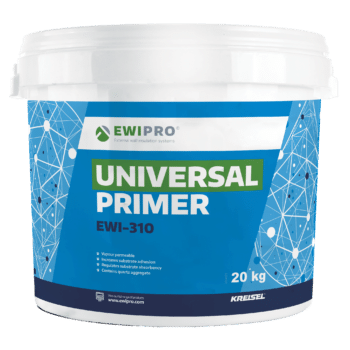
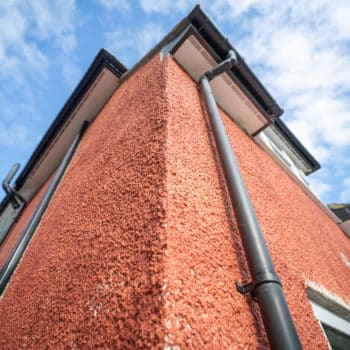
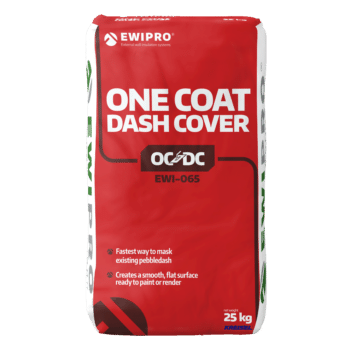
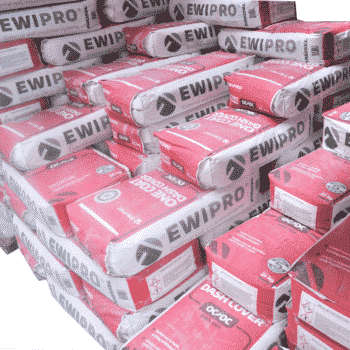
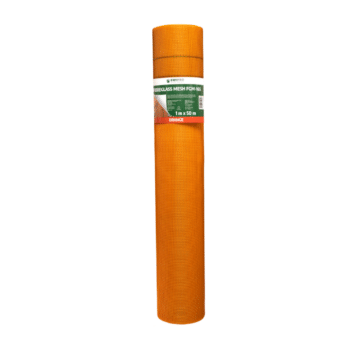
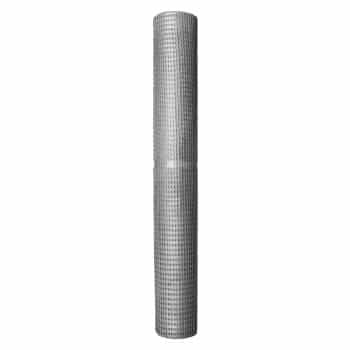
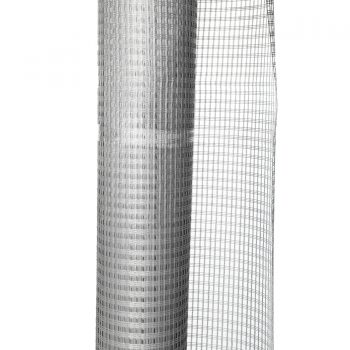
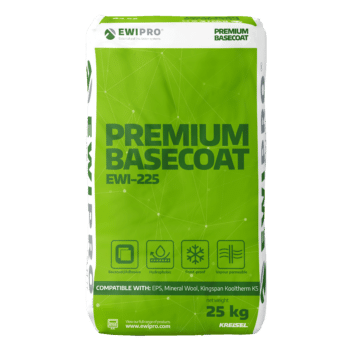
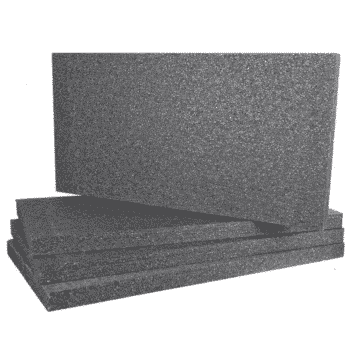
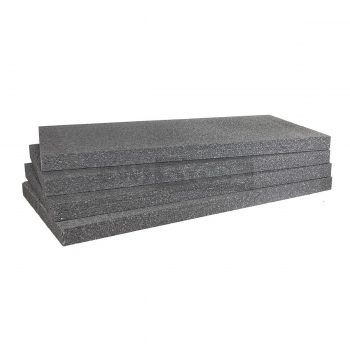
9 thoughts on “How To Cover Up Old Pebbledash”
We had pebbledash on our property in clapham and used the OCDC to great effect. It really modernised the look of the house and while lots of our neighbours have traditional brick finish, the modern look we have is a huge improvement on the 70’s dash. Would strongly recommend.
Can you post before and after pictures
Hi there, was enquiring if you could use OCDC on top of painted dash?
Kind regards
My daughter bought house exterior cover with pebbled ash. It doesn’t look nice how can we make exterior look modern .
Hello, the easiest way to cover up pebbledash is OCDC which can then be covered with Silicone Render or Silicone Paint (both tinted to any colour). Have you given any thought to installing external wall insulation as well?
HI, Can you use OCDC on painted pebbledash?
Hi Gio, should be no issue but you will need to prime the surface to make sure it adheres properly.
Hi, I have a strong painted pebbledash which look old due of repairs during the years before my ownership.
I was thinking to cover with fresh render but avoiding removing the old stuff.
can you please advise if this is possible?
Thanks
Hi Gio, we would recommend covering with something like OCDC first to get a more uniform layer, and then rendering.